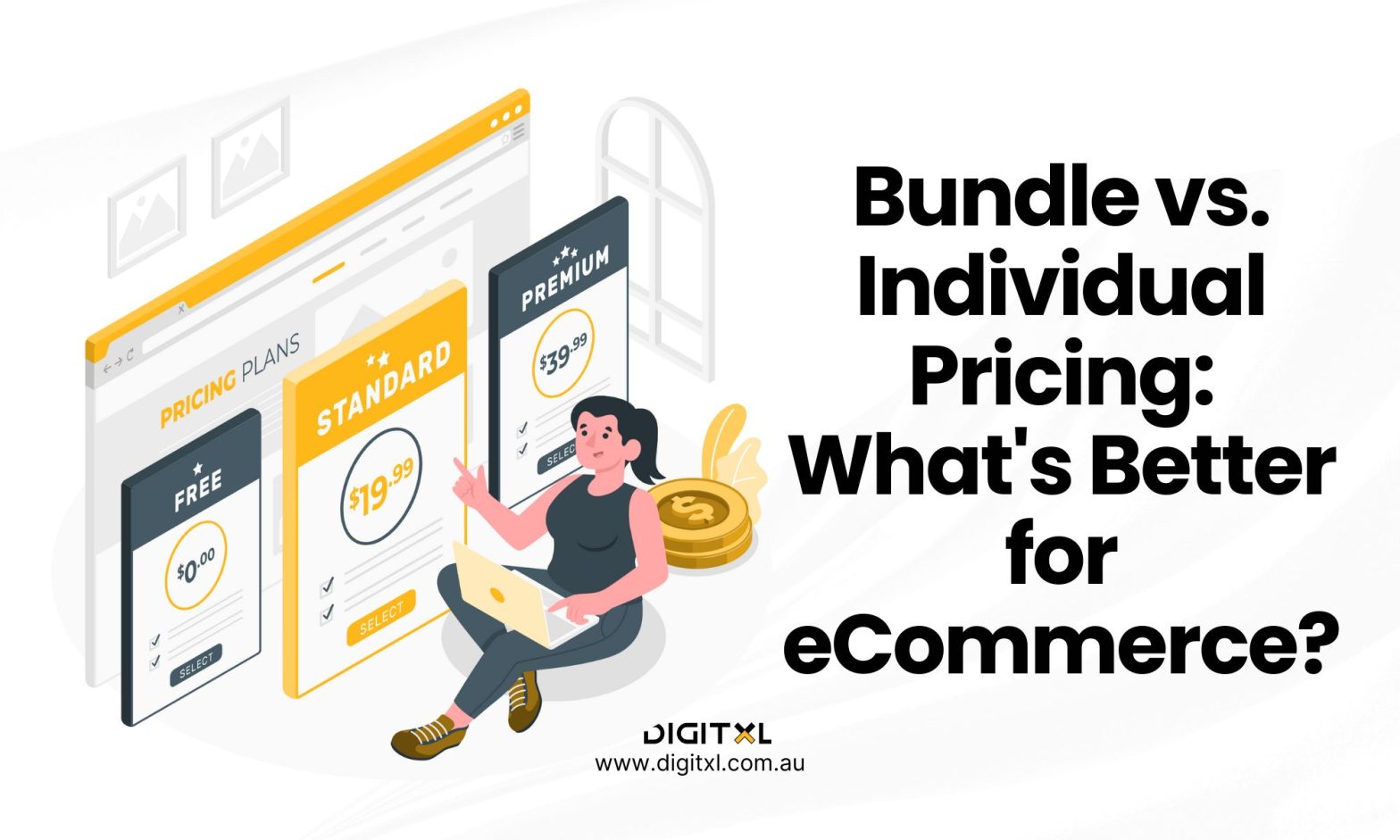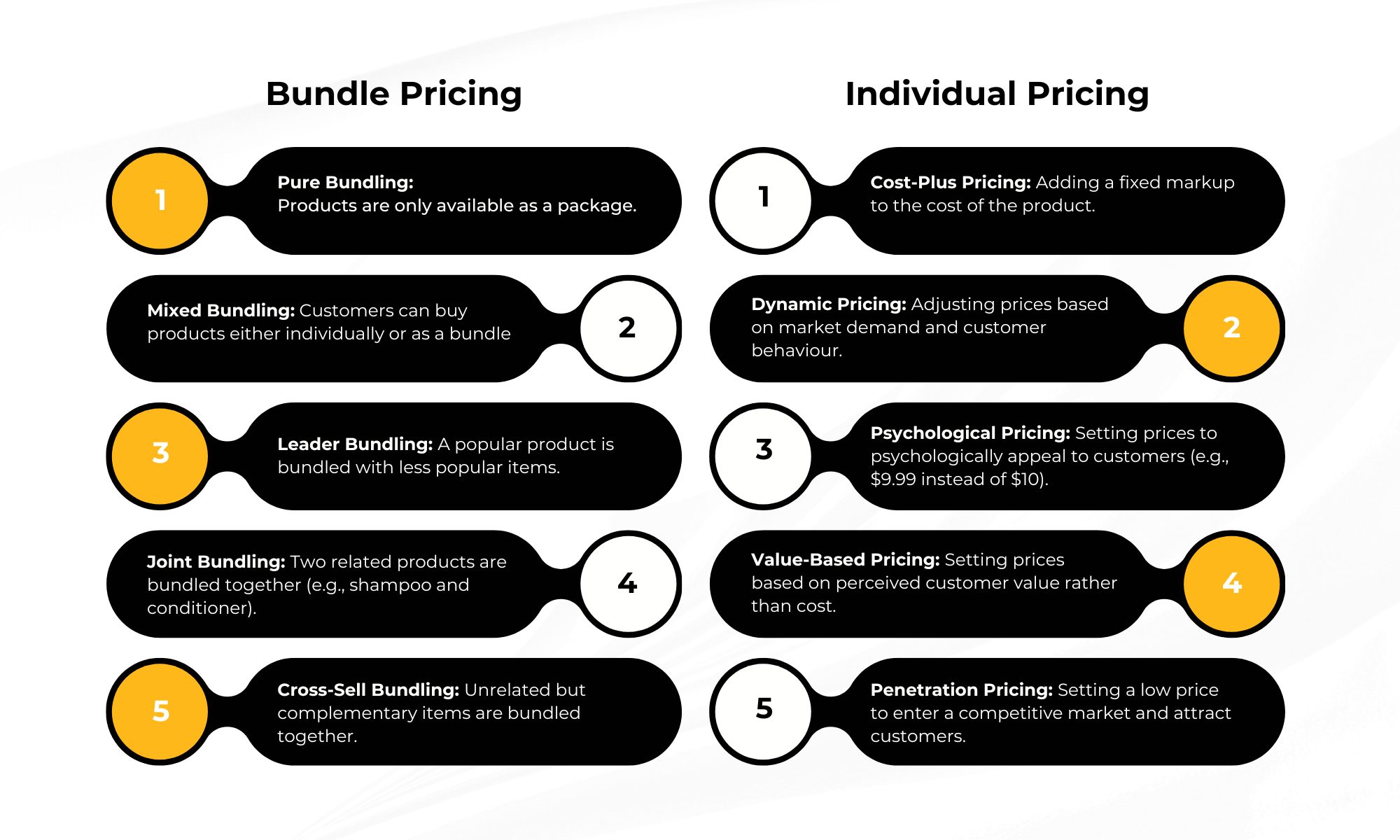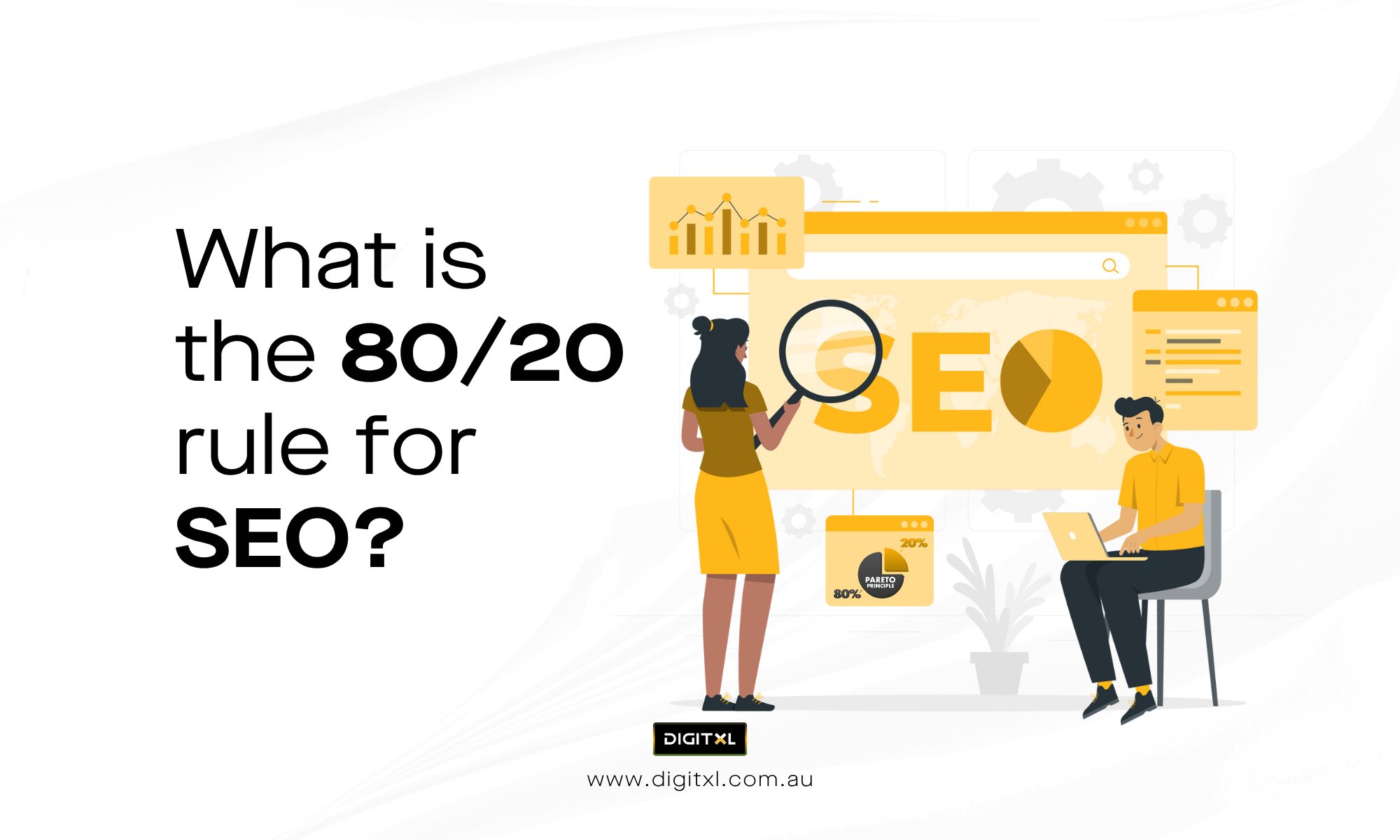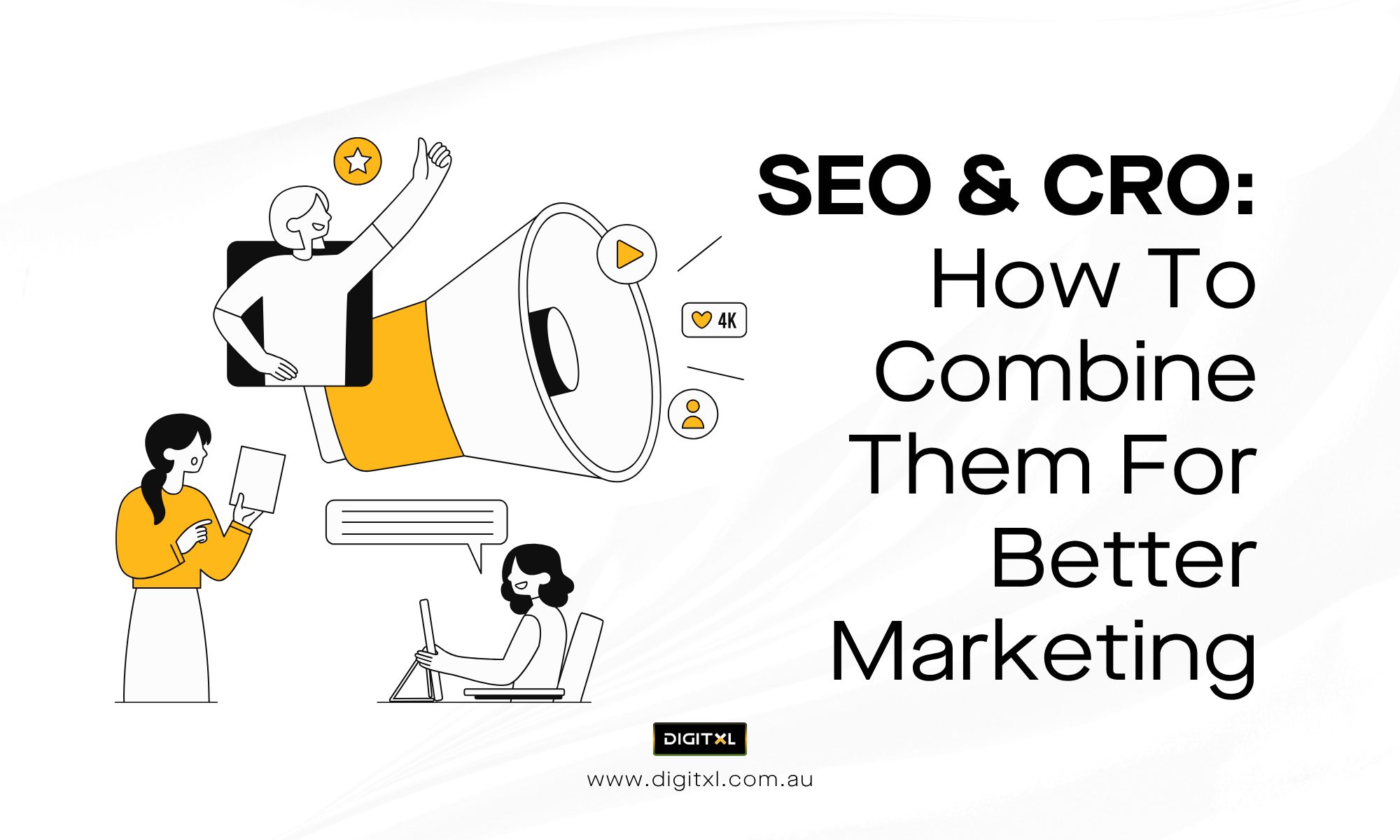- Ecommerce
Bundle vs. Individual Pricing: What’s Better for eCommerce?
13 Aug 2024
One quick tip to boost conversions is to rethink how you present your prices. Instead of sticking with the traditional approach, consider experimenting with bundle pricing.
Bundling products together at a discount can often lead to a surge in average order value and a happier bottom line. Let’s dive into the pros and cons of bundle pricing versus individual product pricing, and discover which is better: bundle or individual pricing to best serve your e-commerce business.

2. Understanding Bundle Pricing
Bundle pricing involves selling multiple products together at a discounted rate. This strategy is effective for increasing perceived value and driving higher average order values (AOV).
Benefits:
- Increased Perceived Value: Customers feel they get more for their money, which can boost sales.
- Higher AOV: Bundling encourages customers to purchase more items.
- Inventory Management: Helps clear out less popular or overstocked items.
Challenges:
- Profit Margins: Discounts can reduce profit margins if not carefully managed.
- Complexity in Pricing: Requires careful planning to ensure bundles are attractive yet profitable.

3. Tips for Bundle Pricing:
- Personalised Bundles: Offer personalised bundles based on customer purchase history to increase relevance and attractiveness.
- Seasonal Bundles: Create bundles for specific seasons or events to capitalise on peak shopping periods.
- Cross-Sell Bundles: Pair popular products with related items to introduce customers to new products while boosting sales.

4. Individual Product Pricing Explained
Individual product pricing sets a price for each item independently. This approach allows for more straightforward pricing and easier adjustments based on market demand.
Benefits:
- Transparency: Customers know exactly what they are paying for each item.
- Flexibility: Easier to adjust prices based on market trends and competition.
- Simplicity: Less complex than managing multiple bundle options.
Challenges:
- Lower AOV: Customers may purchase fewer items compared to bundles.
- Marketing Efforts: Requires more effort to market individual items effectively.
5. Tips for Individual Product Pricing:
- Price Testing: Regularly test different price points to find the optimal pricing for each product.
- Dynamic Pricing: Implement dynamic pricing strategies that adjust prices based on demand, competition, and customer behaviour to maximise profits.
- Clear Value Proposition: Ensure that the value of each product is clearly communicated to justify the price.

6. Deciding the Best Strategy for Your Business: Bundle Pricing Or Individual Pricing
Choosing between bundle pricing and individual product pricing depends on various factors, including your business model, product types, and customer preferences.
Consider Bundle Pricing If:
- You have complementary products that offer more value together.
- You aim to increase your average order value.
- You need to move excess inventory quickly.
Consider Individual Pricing If:
- You have a wide range of products with varying appeal.
- Transparency and simplicity are crucial for your customer base.
- You want to maintain higher profit margins per item.
Combining Both Strategies
For many businesses, a hybrid approach can be the most effective. By offering both bundle deals and individual pricing, you can cater to different customer needs and maximise your revenue potential.
Tips for Implementation:
- A/B Testing: Continuously test and analyse the performance of both strategies. Tools like Adobe Target, VWO, and Covert can help you determine which approach resonates best with your audience.
- Customer Segmentation: Tailor your pricing strategy to different segments of your audience. Use platforms like HubSpot to create personalised marketing campaigns based on customer behaviour.
- Data-Driven Decisions: Utilise analytics to inform your pricing strategy and make adjustments as needed. Tools like Google Analytics provide valuable insights into customer preferences and purchasing behaviour.
7. Advanced Strategies for Pricing Optimisation
AI-Powered Pricing Models: Make the best use of AI and machine learning to optimise pricing dynamically. AI can analyse vast amounts of data to identify patterns and trends, allowing for real-time price adjustments that maximise profitability.
Emotional Pricing: Consider the psychological aspects of pricing. Prices ending in .99 or .95 can make products seem cheaper, while round numbers can convey quality. Test different pricing strategies to see what resonates best with your audience.
Subscription Models: If applicable, offer subscription pricing. This can provide a steady revenue stream and increase customer loyalty. Subscriptions can be bundled with products or offered as a separate service, depending on your business model.
Geo-Pricing: Implement geo-pricing to adjust prices based on the customer’s location. This can help optimise prices for different markets, considering factors like local competition and purchasing power.
8. FAQ
At DigitXL, we understand the nuances of pricing strategies and their impact on conversion rates. Our team of experts is dedicated to helping businesses like yours optimise their pricing models to not only drive sales but also improve overall customer satisfaction.
9. FAQ
Q1. What is bundle pricing in eCommerce?
A. Bundle pricing means selling multiple products together at a discounted rate. It increases perceived value, encourages customers to buy more, and often helps clear out excess or slow-moving inventory.
Q2. What are the main benefits of individual product pricing?
A. Individual pricing keeps things transparent and simple customers know exactly what they are paying for each item. It also allows businesses to adjust prices more easily based on demand, competition, or seasonality while maintaining higher per-item margins.
Q3. Which strategy helps increase average order value (AOV) more effectively?
A. Bundle pricing generally boosts AOV since customers are encouraged to purchase more items together. However, individual pricing may lead to fewer items per order but higher profit margins per product.
Q4. Can businesses use both bundle and individual pricing together?
A. Yes. A hybrid approach is often the most effective. Offering both bundles and standalone products caters to different customer preferences and maximises revenue opportunities.
Q5. How can I decide which pricing strategy is best for my eCommerce store?
A. The right approach depends on your business model, product type, and customer base. Use A/B testing, customer segmentation, and analytics tools to see whether bundles, individual pricing, or a mix of both drive the best results for your store.
Q6. How can a CRO agency help optimize my pricing strategy in eCommerce?
A. A CRO (Conversion Rate Optimization) agency can analyze your website’s user behavior and conversion patterns to determine the most effective pricing strategies. They can use data-driven insights to suggest whether bundle pricing, individual pricing, or a hybrid model would work best for increasing conversions, boosting average order value (AOV), and improving overall sales performance.





